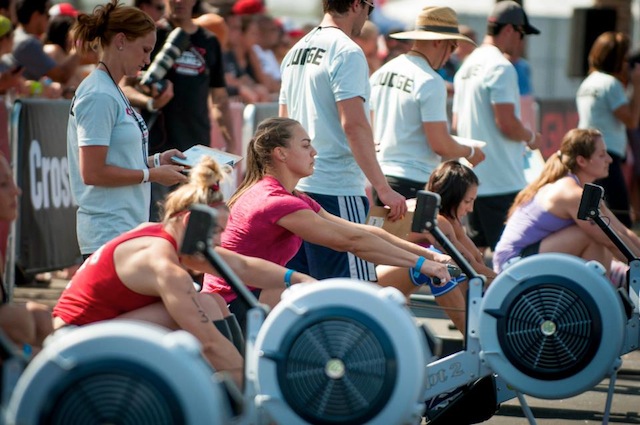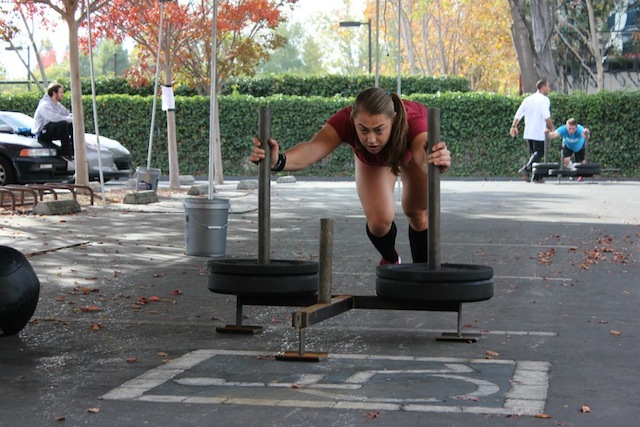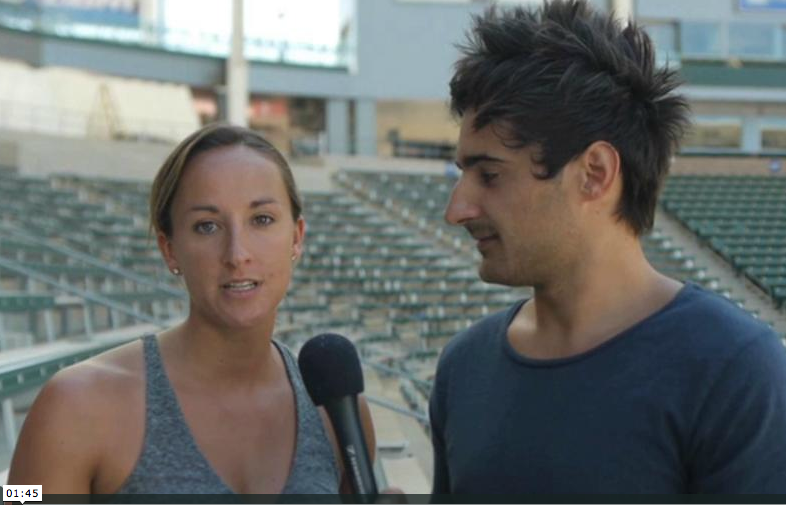
As the sport of CrossFit has grown, more and more CrossFitters are training with the purpose of competing. There are countless local throwdowns occurring all year round, the Open has become the all-inclusive CrossFit Games experience, and CrossFitters are pushing themselves to new heights year after year with the hopes of reaching their goals.
With this desire to compete, athletes are seeking more specialized programming than what they see at their gyms and on CrossFit.com. I myself began training with a coach this year so that my own training would be more organized and focused on improving my weaknesses while maintaining my strengths.
More and more people are taking advantage of distance training – a method of working with a coach via email/text/phone, but rarely (if ever) in person. The coach serves more to organize the athlete’s training program, review workout results each day, and offer guidance as to how to approach the next series of workouts.
I began distance training for an athlete in the Canada East region. She was visiting Valley CrossFit last August and after we trained together for a couple days and she was leaving to go back to Canada we spoke about having me program her weekly training. Nearly a year later, we have improved her lifting numbers across the board, anywhere from 20-40lbs. She has learned to do consecutive sets of chest to bar pull-ups, handstand push-ups, ring dips, and ring muscle ups – none of which she could do last August.
The amazing thing for me as her coach has been witnessing her transformation over the course of weekly emails in which she will list her new PR’s and workout results. She will also address weaknesses that she noticed during training. Things that felt heavy, difficult, or inconsistent. From there, I make adjustments and send her another week to work with. After not qualifying for her Regionals last year, she not only qualified as an individual but decided to represent her team and ended up taking first in the Canada East Regionals team competition, ensuring her ticket to the Games this July.
When athletes come to me for help with programming, we take a look at what they’ve done in the past, what they’re doing now, what’s worked, and what they feel has not. We discuss their strengths and weaknesses and list all of the current lifts, PRs, and benchmarks. From here it becomes a matter of finding the right path to reach their goals – and there isn’t only one right answer. As a coach I need to be able to adapt, listen, and readjust from day to day and week to week.

Some common faults that I see when athletes are looking for a training overhaul are:
Not incorporating enough strength training
Ultimately, the ability to do more work most often comes down to a lack of strength issue. Working technique on various skills is definitely important, and metcons will train an athlete’s cardio respiratory endurance among other things, but after a point if the athlete doesn’t have the strength and the stamina he/she will not last. Strength takes time to develop, which is why it needs to be rooted at the core of any training program in order to keep elevating the level of the athlete.
Ignoring their weaknesses
In CrossFit, we say that the athlete who is most balanced across all skills/movements is the fittest. Since we as CrossFitters are on a quest to raise our fitness level we need to target our weakest areas. This may seem obvious, but evaluating various athletes’ training I have seen a lot of biasing in favor of what he/she is most comfortable and that will end up causing problems down the road.
Realizing and enhancing their strengths – complimenting
While we need to focus our attention on improving our weaker areas, athletes must also recognize where they already have an advantage and not lose capacity in that area. So in other words, what makes CrossFit most-awesomest: be good at everything all at once. As athletes adjust their programming to attack their weaknesses, they can do so while still complimenting their strengths thereby maintaining, if not raising, capacity in all areas of fitness.
Overtraining
My job as a coach is not only to push an athlete but also reel them in when necessary. Overtraining is highly subjective and needs to be address with different athletes at different times. This doesn’t just mean an athlete is spending too much time in the gym. The concept of overtraining can also occur when athletes are training the same or similar movements day after day.
I try to hold a mirror up to my athletes and point out what they did in their past week of training that maybe wasn’t as balanced as it could be. For example, maybe they had some kind of a squatting movement 4 days in a row and on the fifth day they wondered why they didn’t PR a workout with squatting. Just because it’s not the exact same movement, you need to evaluate things like what body parts are being taxed and how often.
Recovery (or lack thereof)
Helping athletes to get a better hold on their recovery after workouts and between training times is huge. Most athletes I’ve seen are not doing all that they can to actively recover their bodies from the intense workouts they put themselves through.
Monitoring sleep, nutrition, hydration, supplements, stress, rest days, energy levels, and mobility we are able to help athletes find their optimal performance zone. Oftentimes it is up to me to assign things like rest days and mobility before and after training. In doing this athletes can see how inter-connected recovery is and must be to their training.
Overall, there are many components to dialing in one’s training program. By evaluating these areas you can get a better understanding of what each athlete needs and how to make adjustments so that those are addressed.
Even without a specialized training program, any CrossFitter can look back in their logbook, analyze their training and decide where they can make adjustments. Having that awareness is the first step to kicking up their training and reaching that next level.


















Follow Us